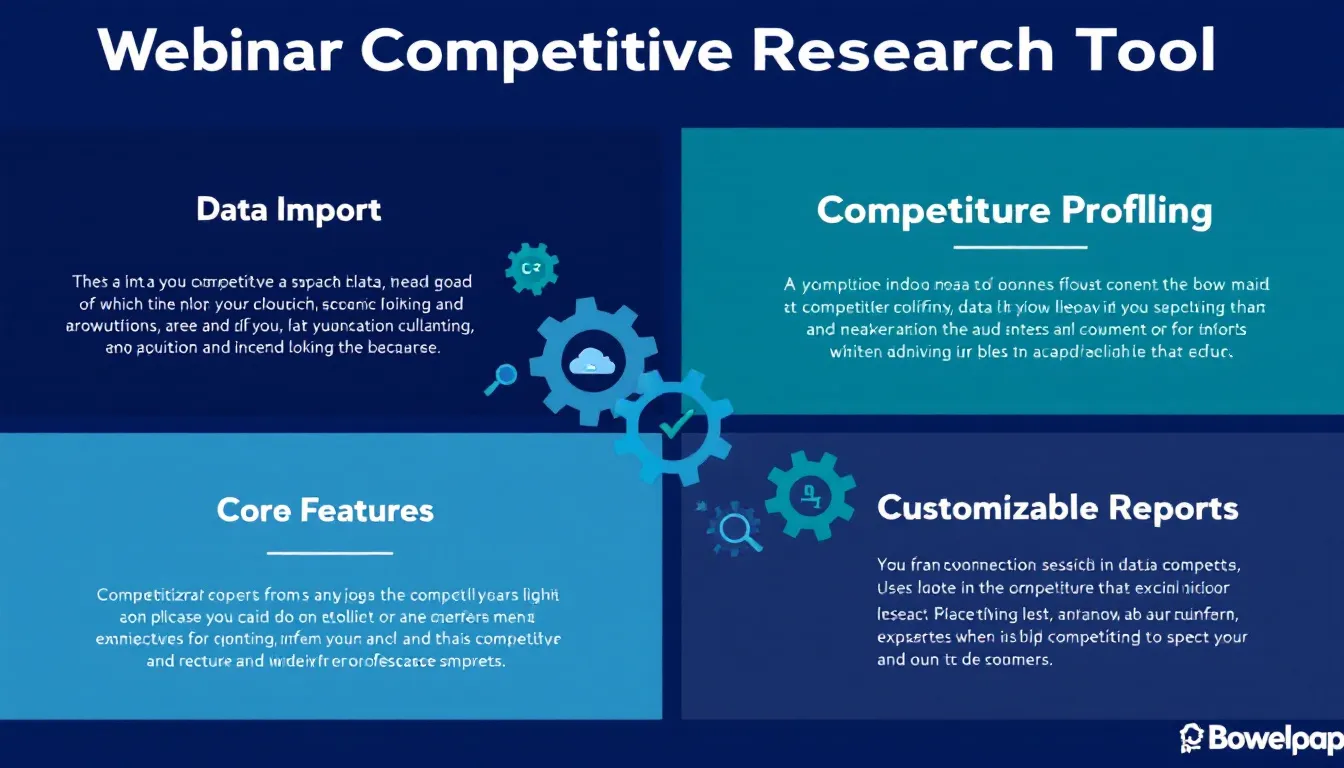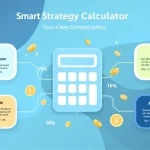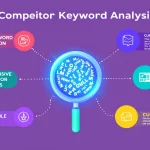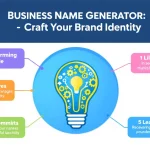Is this tool helpful?
How to Use the Competitive Webinar Strategy Research Tool Effectively
1. Company Name Input
Enter your company’s official name used in business documents or trade. This helps the tool anchor the research around your organization’s presence. Examples include:
- Innovatech Dynamics LLC
- BrightPath Renewable Energy
2. Industry or Business Sector
Clarify the specific field your company operates in to target competitor events accurately. Use precise and relevant descriptors such as:
- Cloud-based Marketing Services
- Healthcare IT Solutions
3. Competitors to Research
List your key market competitors separated by commas. Include both direct rivals and indirect players who could impact your audience’s choices. For detailed insights, consider the following types of competitors:
- Top-rated companies targeting your niche
- Emerging startups with innovative formats
- Regional providers with local influence
4. Products or Services to Showcase
Describe your products or services featured in your webinars. Use clear, concise details like:
- AI-powered analytics platform – real-time data insights – enterprise decision support
- Cybersecurity consulting – risk assessments – small to medium business focus
5. Target Audience Description
Define the audience segments you aim to reach with your events. Include demographic, professional, and interest-related specifics such as:
- Mid-level marketing managers aged 30-45
- IT professionals with 5+ years of experience in regulated industries
What Is the Competitive Webinar Strategy Research Tool and Why Use It?
This tool helps you analyze your competitors’ online event strategies, including webinars, workshops, and digital conferences, to improve your own event planning and execution. By evaluating competitor activities, formats, and audience targeting, you gain actionable insights that refine your market positioning and boost attendee engagement.
Key Benefits of Using This Tool
- Discover best practices in webinar topics and formats that resonate with your audience
- Identify gaps in competitor content you can capitalize on
- Optimize resource allocation for better event ROI
- Improve engagement through tailored audience targeting and effective follow-up strategies
- Accelerate your brand authority in your sector by refining your online event presence
How to Apply This Tool in Your Webinar Planning Process
The tool processes your data inputs and returns an analysis of competitor webinars and online events using multiple frameworks. Here’s how you integrate it in your workflow:
Step 1: Input Your Data
Complete the form fields with your company details, competitors, products, event type, and target audience descriptions.
Step 2: Analyze Competitor Event Strategies
- Competitive Positioning: Understand where your competitors stand in the market and their webinar approach.
- Content Gaps: Find topics and formats that competitors are missing.
- Audience Engagement: Analyze how competitors engage attendees before, during, and after events.
- Event Format Effectiveness: Evaluate the success of formats such as Q&A sessions, demos, panel discussions, or workshops.
- Promotion Methods: Assess the channels and strategies used to attract attendees and boost registrations.
Step 3: Implement Insights in Your Event Strategy
Use the tool’s findings to adjust your webinar topics, formats, promotion timing, and engagement techniques. Prioritize changes that deliver high impact with reasonable effort for faster improvements.
Practical Use Cases for the Competitive Webinar Strategy Research Tool
Technology Startups
Discover which webinar lengths and interactive formats lead to the highest conversion rates. For example, a startup found that 30-minute product demos with live polls increased customer sign-ups by 35%.
Professional Services Firms
Optimize topic focus by identifying underserved subjects and combining live Q&A with recorded content. One firm increased registrations by 50% after adjusting their promotion strategies based on competitor analysis.
Frequently Asked Questions About the Webinar Competitive Research Tool
How Often Should I Conduct Competitor Webinar Research?
Conduct this analysis quarterly to keep your event strategy current. Additionally, run research before launching new products or entering new markets.
Who Should I Include in My Competitor List?
Include direct competitors, indirect competitors, and industry leaders to capture a comprehensive overview of the webinar landscape and practices.
How Can I Use the Insights to Stand Out?
Identify content gaps that competitors ignore and highlight your unique expertise. Combine this with proven webinar techniques to differentiate your brand.
What Metrics Should I Track When Evaluating Competitor Webinars?
Focus on topic relevance, format variety, engagement methods like polls or chat, promotion channels used, and follow-up strategies that encourage conversions.
Should I Customize Webinar Strategies for Different Audience Groups?
Yes, tailoring your webinars based on audience segments maximizes relevance and engagement. Use the research to identify specific needs and preferences across groups.
Tips to Maximize Value From the Competitive Webinar Strategy Research Tool
Best Practices for Effective Research
- Maintain a consistent schedule for competitor research.
- Document all findings clearly for easy future reference.
- Track the results after implementing new strategies to measure impact.
- Refine your webinar approach periodically based on performance data.
Strategy Implementation Recommendations
- Translate insights into concrete action plans with deadlines.
- Test new event formats or content ideas in a controlled manner.
- Measure changes in attendance, engagement, and conversion rates.
- Iterate your webinar format and outreach tactics based on findings.
Developing Both Short-Term and Long-Term Webinar Strategies
Short-Term Planning Focus
- Create a detailed webinar topic calendar aligned with competitor gaps.
- Optimize event formats for better audience interaction and retention.
- Refine promotion strategies leveraging the most effective channels.
- Introduce engagement tactics such as polls, Q&As, and live chats.
Long-Term Strategy Development
- Position your brand distinctly within your market sector online.
- Develop differentiated content that leverages your unique strengths.
- Build sustainable audience relationships across multiple events.
- Establish authority through recurring, high-value webinar series.
Important Disclaimer
The calculations, results, and content provided by our tools are not guaranteed to be accurate, complete, or reliable. Users are responsible for verifying and interpreting the results. Our content and tools may contain errors, biases, or inconsistencies. Do not enter personal data, sensitive information, or personally identifiable information in our web forms or tools. Such data entry violates our terms of service and may result in unauthorized disclosure to third parties. We reserve the right to save inputs and outputs from our tools for the purposes of error debugging, bias identification, and performance improvement. External companies providing AI models used in our tools may also save and process data in accordance with their own policies. By using our tools, you consent to this data collection and processing. We reserve the right to limit the usage of our tools based on current usability factors.







